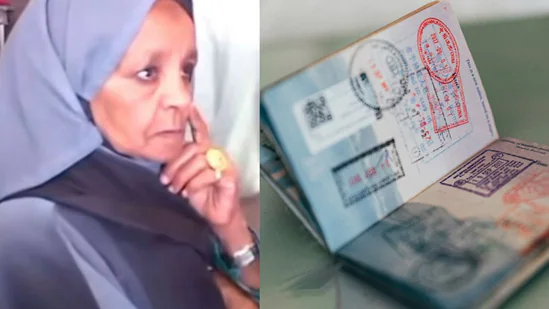In recent weeks, a viral video featuring a woman arriving at JFK Airport with a passport from the fictional country of Torenza has captivated online audiences. This story, seemingly bizarre yet fascinating, has sparked massive curiosity, debates, and conspiracy theories across social media. But beneath the intrigue lies a deeper issue about technology, misinformation, and the power of digital storytelling in the modern world. In this blog post, we will explore the origin of this viral phenomenon, evaluate its authenticity, and discuss its larger implications for our understanding of reality and truth in the digital age.
Unraveling the Viral Phenomenon: The Woman from Torenza
The story began with a seemingly innocuous video posted on TikTok and other social platforms, showing a woman confidently presenting her Torenza passport to immigration officers at JFK Airport. The woman calmly explains that she hails from a country that doesn’t officially exist—Torenza, a fictitious nation. The video quickly gained traction, with millions of views and thousands of comments from people fascinated by the absurdity and mystery surrounding her story.
What makes this story so compelling is not just the content itself but the way it was crafted. The woman appears completely authentic—her demeanor, the passport, and her explanations seem convincingly real. This authenticity, combined with the viral spread, led many to question whether this was an extraordinary incident or a meticulously crafted hoax.
The Truth Behind the Video: Fact or Fiction?
As with many viral stories, skepticism mounted rapidly. Fact-checkers, airport authorities, and digital security experts quickly scrutinized the video. Official statements confirmed that no such incident occurred at JFK Airport, and there is no record of a passport from a country called Torenza ever being issued.
Further investigation revealed that the video was created using advanced AI technology—deepfake and CGI techniques that produce highly realistic but entirely fabricated content. Experts in digital forensics identified subtle signs that indicated the video was digitally manipulated, including inconsistencies in the background, lighting, and facial expressions.
The Rise of AI-Generated Misinformation
The Torenza viral video is an exemplar of how artificial intelligence has revolutionized content creation. Deepfake technology can now produce videos that are indistinguishable from reality, making it challenging for viewers to differentiate truth from fiction. This phenomenon has several profound implications:
Disinformation campaigns: Malicious actors can craft convincing fake videos to spread false narratives, influence elections, or sow discord.
Misinformation in everyday life: Innocuous-seeming content, such as viral videos like that of Torenza, can spread false stories rapidly, creating confusion and misinformation.
Digital literacy challenges: As AI-generated content becomes more sophisticated, educating the public on media literacy and critical thinking becomes essential.
This incident underscores the importance of Developing tools and skills to identify and critically evaluate digital content.
The Cultural and Social Impact of the Torenza Story
Beyond the technical aspects, the story of the woman from Torenza taps into a broader human fascination with mystery and the unknown. People are naturally drawn to stories of hidden worlds, secret nations, and unexplained phenomena. The viral video plays into this curiosity, sparking countless discussions and theories about:
Parallel universes
Time travel and alternate realities
Hidden or secret governments and territories
Additionally, the story prompts reflection on the nature of identity and the ideas of belonging. If someone claims to be from a country that does not exist, what does it say about personal identity and the stories we tell about ourselves? In the digital age, such narratives can be powerful tools for self-expression, resistance, or escapism.
The Larger Implications: Navigating Truth in a Digital World
The Torenza phenomenon is a stark reminder of how technology can distort reality. For individuals, it emphasizes the importance of media literacy and the need to question what we see online. For society, it raises questions about:
The ethical responsibilities of content creators
The role of governments and tech companies in regulating deepfake technology
The importance of establishing verified sources and fact-checking mechanisms
As AI technology continues to evolve, so must our capacity to discern reality from fiction. This calls for international collaboration, better digital literacy education, and transparent policies to combat misinformation.
Embracing Critical Thinking in a Hyperconnected Age
The viral story of the woman from Torenza exemplifies both the incredible possibilities and dangerous pitfalls of today's digital landscape. While technology allows us to create astonishingly realistic content, it also challenges our ability to trust and verify information.
In an era where anyone can craft convincing stories about worlds that do not exist, nurturing a skeptical and inquisitive mindset is more critical than ever. By fostering media literacy, supporting technological safeguards, and encouraging responsible content creation, we can better navigate the complexities of the digital age.
The woman from Torenza may be a product of artificial intelligence, but her story serves as a valuable lesson the pursuit of truth must be persistent, vigilant, and informed. Only then can we truly understand what is real in a world where fiction can seamlessly imitate reality.







Leave a Reply